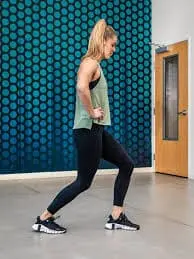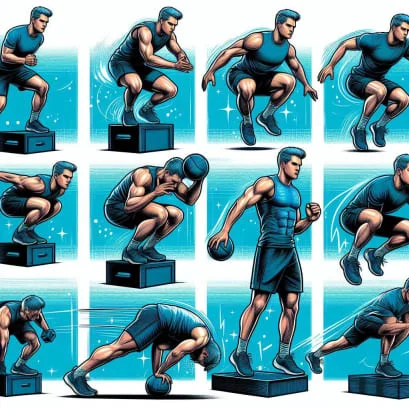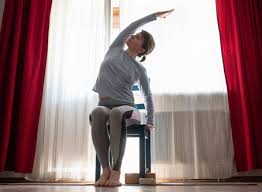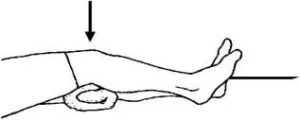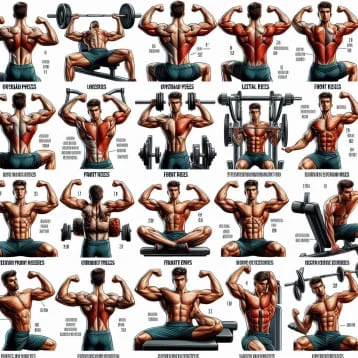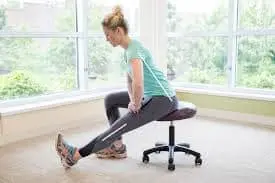14 Best Stretches for Shin Splints
Introduction:
Stretches for Shin Splints are essential for anyone experiencing the sharp, persistent pain along the front of the lower leg, often triggered by overuse or improper technique in activities like running, walking, or dancing.
Medial tibial stress syndrome, another name for shin splints, is a common injury that affects the tibia (shinbone) and surrounding muscles.
An everyday overuse injury is shin splints. The cause of shin splints is overuse of the leg’s muscles and bones from repeated motion. A common injury suffered by athletes and dancers is shin splints.
Benefits
- Relaxation of muscles
- Reduce pain
- Increased flexibility
- Lessen any tightness or strain.
- Minimize inflammation
- Your balance and coordination will improve with stretches Because they improve the balance between your body and mind by calming your muscles, stretches are also excellent for lowering stress levels.
- Stretches relieve soreness and stiffness.
Stretches for Shin Splints:
The stretches listed below are beneficial for treating shin splints;
Gastrocnemius calf stretch
- Step up carefully and place your hands on a wall or the back of a chair to support yourself.
- Now put one foot behind you.
- Keep going to place your feet flat.
- Maintaining your back straight and your heel down, flex your front knee until you feel a stretch in your back leg’s calf.
- Hold this position for a few seconds.
- Then return to your neutral position.
- Then relax.
- Repeat this stretch three to five times.
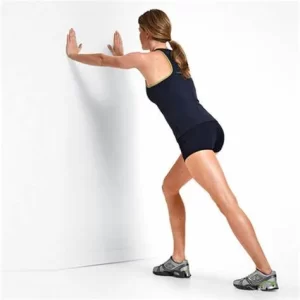
Seated calf stretch
- Begin by taking a long, comfortable seat on the floor.
- Tie a rope or cloth over the front of your foot to raise it to its maximum length.
- Legs should remain parallel to the ground.
- The only joints in your body that should move are your ankles.
- Hold this position for a few seconds.
- Then return to your neutral position.
- Then relax.
- Repeat this stretch three to five times.
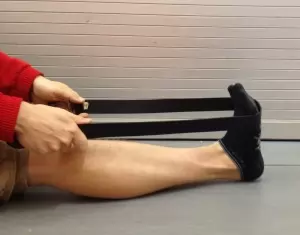
Soleus calf stretch
- To begin, place yourself in front of a closed door or wall.
- Place both hands against the wall.
- Proceed to step slightly ahead of the other after that.
- To feel the stretch, slowly lower you till your knees are bent on both sides.
- Don’t take your heels off the ground.
- Hold this position for a few seconds.
- Then return to your neutral position.
- Then relax.
- Repeat this stretch three to five times.
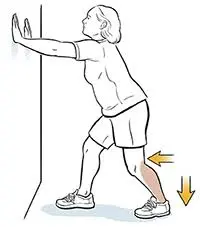
Lying Shin Stretch
- Start with relaxing while lying on your side.
- Your foot should be behind your back when you bend your upper leg accordingly.
- You may move your front foot to your back by reaching back and gripping it.
- Hold this position for a few seconds.
- Then return to your neutral position.
- Then relax.
- Repeat this stretch three to five times.
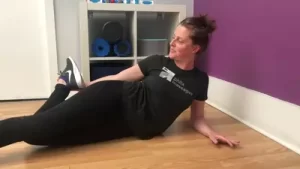
Kneeling shin stretch
- Start on all fours and gently lower yourself so that your heels are below your glutes.
- Place your hands on both knees.
- Apply more force while lowering the heels gradually.
- Hold this position for a few seconds.
- Then return to your neutral position.
- Then relax.
- Repeat this stretch three to five times.
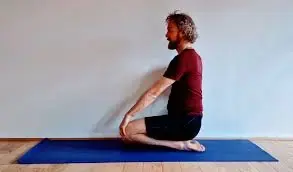
Hamstring wall stretch
- Look for an open door.
- Lie flat on the ground or a mat with your back flat and your left leg fully extended on the floor.
- It should be possible to fit the left leg through the door hole.
- The right leg should be rested on the wall next to the entryway.
- Change the gap between the body and the wall so that the right leg feels a tiny amount of pressure.
- Hold this position for a few seconds.
- Then return to your neutral position.
- Then relax.
- Repeat this stretch three to five times.
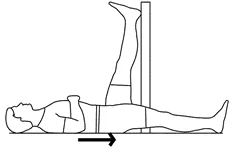
Standing hamstring stretch
- Start by taking a comfortable posture on the ground.
- Up until you feel a slight pull in the back of your leg, keep your back straight and progressively flex forward from your hips.
- To provide support, place one leg on a tiny stool or table and feel the stretch.
- Hold this position for a few seconds.
- Then return to your neutral position.
- Then relax.
- Repeat this stretch three to five times.
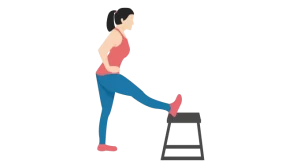
Ankle Dorsiflexion Stretch
- With a stand facing a wall, begin.
- Don’t take your heel off the ground.
- Maintain a straight knee.
- Touch the ground with the toe of your front foot.
- Your calf muscles will experience stretching.
- Hold this position for a few seconds.
- Then return to your neutral position.
- Then relax.
- Repeat this stretch three to five times.
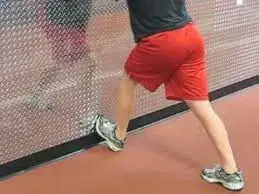
Standing Anterior Tibialis Shin Stretch
- Make sure you are comfortable standing up first.
- You can place your hand on a wall or another item to help with balance.
- The knees are slightly bent on both sides.
- Then put one foot firmly on the ground.
- Position the other foot such that it is directly behind this stable foot and its toe touches the ground.
- You should feel a stretch from the top of your stretching foot into your shins if you pull your bent leg forward while maintaining a firm toe grip.
- Hold this position for a few seconds.
- Then return to your neutral position.
- Then relax.
- Repeat this stretch three to five times.
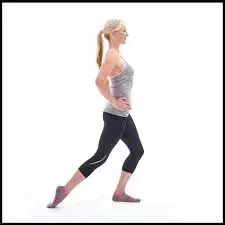
Achilles tendon seated stretch
- First, take a seating position on the ground surface.
- Bend one knee while keeping your heel on the ground, then extend the other leg out in front of you.
- Tie a belt, cloth, or workout band around the heel of your foot to pull your toe towards you.
- Hold this position for a few seconds.
- Then return to your neutral position.
- Then relax.
- Repeat this stretch three to five times.
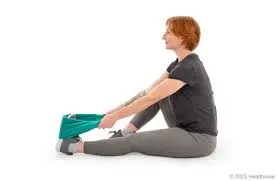
Standing calf stretch
- Beginning by standing facing a wall.
- Take a step backward with one leg extended straight and forward with the other.
- Maintain the heel of your other foot on the ground.
- Then, press yourself up against the wall.
- As soon as your left calf muscles’ posterior begin to pull.
- Hold this position for a few seconds.
- Then return to your neutral position.
- Then relax.
- Repeat this stretch three to five times.
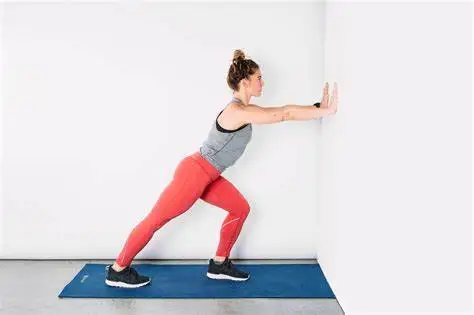
Low Runner’s Lunge
- Starting from a standing posture, swiftly advance with your right foot to create a low lunge.
- Increasing the stretch as you lower your chest onto your upper right thigh.
- The calf and ankle of the right leg will feel stretched.
- Hold this position for a few seconds.
- Then return to your neutral position.
- Then relax.
- Repeat this stretch three to five times.
Foam Roller Stretch
- Place the foam roller on the surface of the ground.
- It should be sturdy enough for you to rest your shins on top of it.
- After that, roll back and forth for a short while.
- Then return to your neutral position.
- Then relax.
- Repeat this stretch three to five times.
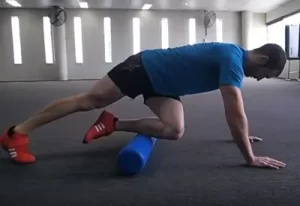
Seated shin stretch
- First, take a seat in a chair.
- One knee should be bent till the toe hits the floor and the knee should be extended in front of the other.
- As you gradually move your weight forward and feel a stretch in your shin, keep your toe firmly planted on the ground.
- Hold this position for a few seconds.
- Then return to your neutral position.
- Then relax.
- Repeat this stretch three to five times.
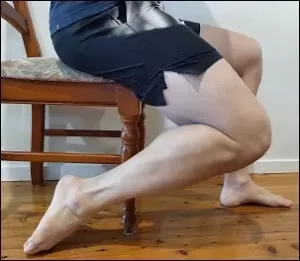
What safety measures are necessary when stretching?
- Stretch gently and warm up.
- Stretching should be done with proper posture.
- Stay away from painful stretches
- If a sharp pain occurs, stop stretching.
- Between stretches, take some time to relax.
- Wearing comfortable clothes.
When do you not perform stretching?
- Fever
- Headache
- You’re feeling sick
- If you feel any pain or numbness
Which physical activity should you stay away from if you have shin splints?
- High jumping
- Running
- Sports activity
How to Avoid Getting Shin Splints:
- Wearing the Right Footwear
You can significantly decrease your chance of getting shin splints when you exercise in the correct shoes. By using running shoes with shock-absorbing technology, shinbone stress can be reduced. Your risk of getting shin splints can be decreased by wearing shoes with orthotic inserts. Your foot’s arch is kept in place with orthotic inserts.
- low impact exercise
To reduce the strain on your shins, involve low-impact exercises in your program. Better options for getting many of the same advantages without the stress of running include biking, swimming, or walking.
- Enough time to heal
Allow your body the time it needs to heal in between workouts. Over time, inflammation may lessen, protecting the injured area from further injury. Applying ice to the hurting location could perhaps help in decreasing swelling and inflammation.
- Stretching
Your lower limbs and Achilles tendon will experience increased strain if your calf or Achilles muscles are too tight. Stretching after an exercise session can help you avoid shin splints.
Summary:
You should avoid engaging in your favorite activity if you have severe shin splint pain. However, you have control to stop them. Additionally, there are ways to help heal from shin splints, such as rest, ice, stretching, and low-impact activity.
Consult with your doctor to rule out other possible causes of the pain if it worsens.
FAQ:
How can shin splints be relieved by stretching?
Shin splints can be avoided with shin stretches. Stretches for shin splints target the soleus muscles, which are located in the calf. You can do these stretches either before or after your usual workout routine.
Can you avoid shin splints by stretching?
Stretches for the feet and ankles may promote better movement and help avoid shin splints. To help prevent shin splints, a stretching regimen can help the muscles in your ankle, foot, and upper legs.
When is the right time to stretch someone with shin splints?
Every day, perform the shin splint stretches for at least 15 to 30 minutes. A modest daily stretching regimen will help you.
Can I run while having shin splints?
Once the pain slows down, take a break from running and gradually resume at smaller, less painful levels. To lower your risk of running-related injuries and improve your running performance.
Can someone with shin splints walk?
Reduce Your Level of Activity
For one to two weeks, refrain from doing any lower leg exercises repeatedly. As long as you are pain-free, try alternative low-impact exercises like riding, swimming, or using an elliptical bike.
Do you ever get rid of shin splints?
Shin splints go away with time. Rest, a modification in your activity plan, and wearing supportive footwear should help alleviate shin splint pain.
How should someone with shin splints go to sleep?
Sleeping on your back with your legs extended and toes pointed in your direction to maintain your calves extended if your athletic injury manifests as shin splints. People with Plantar Fasciitis or sore heels can also benefit from this position.
Is physical therapy beneficial for shin splints?
Techniques such as physical therapy that focus on strengthening the affected area and surrounding areas are essential when treating shin splints. As you gradually increase your activity level, you have to include enough rest into your exercise regimen.
References:
- On December 13, 2023, Bariya, D. The Top 25 Shin Splint Stretches to Promote Quick Healing – Mobile. A mobile clinic for physical therapy. There are 25 best stretches for shin splints at https://mobilephysiotherapyclinic.in.
- March 6, 2019; Hecht, M. Shin splint stretches: 7. Hints for stretches to relieve shin splints from Healthline.
- October 12, 2022: Grose, K. Ways to Extend Your Shin Splints. A WebMD guide on stretch for shin splints. Workouts at https://www.webmd.com/
- Image 3, Stretch Soleus (Adaptability). (As of now). Saint Luke’s Medical Center. This article regarding the soleus muscle’s mobility may be found in the wellness library.
- Image 4, (2019, April 9) PhilaMassages. Tibialis Anterior (shin) sideways stretched [Video]. YouTube. Visit YouTube to view this: https://www.youtube.com/watch?v=-VTcJeC-esk
- Image 5, On July 24, 2023, Harwood, T. Relax Release Renew with a kneeling shin stretch. Unwind, let go, and regenerate. Kneeling Shin Stretch Exercise: Relax Release Renew Co., Ltd.
- Image 8, April 28, 2020: Reinold, M. Exercises for Ankle Mobility to Enhance Dorsiflexion. Michael Reinold. Improve your dorsiflexion with these ankle mobility exercises: https://mikereinold.com/
- Image 9, Sept. 22, 2022, Prajapati, N. Exercise for stretching the tibialis anterior: Health Benefits, How to Do It? Samarpan Clinic for Physiotherapy. Exercise for Tibialis Anterior Stretching: https://samarpanphysioclinic.com/
- Image 11, On September 16, 2023, Song, D. Rehabilitation Hero: Extend Your Calf While Standing. Rehabilitation Champion. Try this standing calf stretch exercise: https://www.rehabhero.ca

